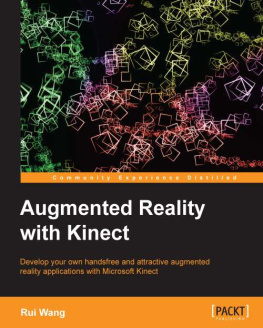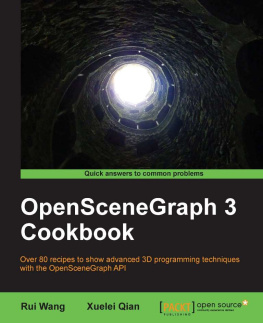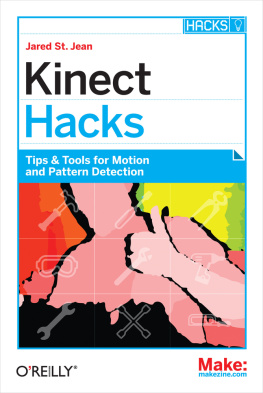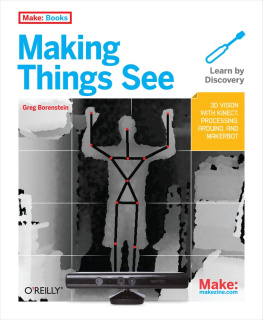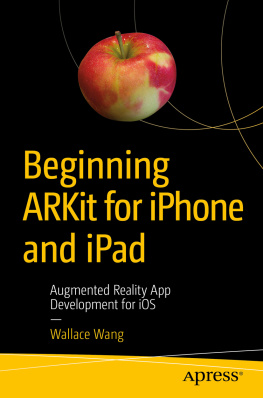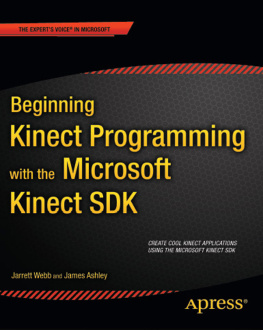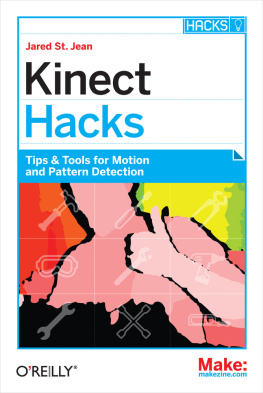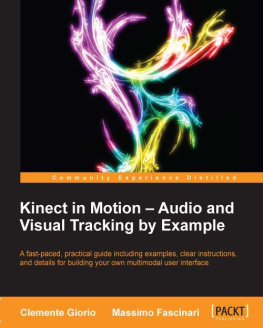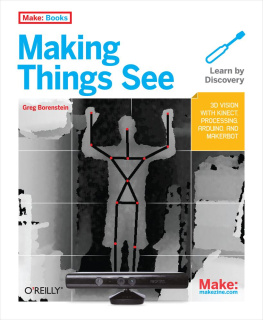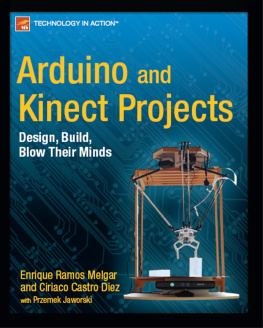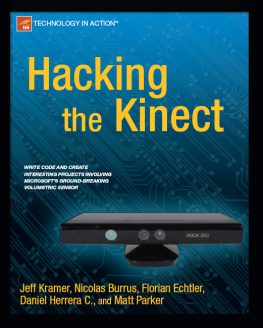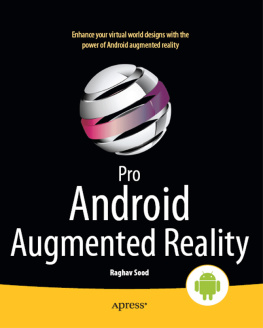Rui Wang - Augmented Reality with Kinect
Here you can read online Rui Wang - Augmented Reality with Kinect full text of the book (entire story) in english for free. Download pdf and epub, get meaning, cover and reviews about this ebook. year: 2013, publisher: Packt Publishing, genre: Home and family. Description of the work, (preface) as well as reviews are available. Best literature library LitArk.com created for fans of good reading and offers a wide selection of genres:
Romance novel
Science fiction
Adventure
Detective
Science
History
Home and family
Prose
Art
Politics
Computer
Non-fiction
Religion
Business
Children
Humor
Choose a favorite category and find really read worthwhile books. Enjoy immersion in the world of imagination, feel the emotions of the characters or learn something new for yourself, make an fascinating discovery.
- Book:Augmented Reality with Kinect
- Author:
- Publisher:Packt Publishing
- Genre:
- Year:2013
- Rating:3 / 5
- Favourites:Add to favourites
- Your mark:
Augmented Reality with Kinect: summary, description and annotation
We offer to read an annotation, description, summary or preface (depends on what the author of the book "Augmented Reality with Kinect" wrote himself). If you haven't found the necessary information about the book — write in the comments, we will try to find it.
Develop your own hands-free and attractive augmented reality applications with Microsoft Kinect
Overview
- Understand all major Kinect API features including image streaming, skeleton tracking and face tracking
- Understand the Kinect APIs with the help of small examples
- Develop a comparatively complete Fruit Ninja game using Kinect and augmented Reality techniques
In Detail
Microsoft Kinect changes the notion of user interface design. It differs from most other user input controllers as it enables users to interact with the program without touching the mouse or a trackpad. It utilizes motion sensing technology and all it needs is a real-time cameras, tracked skeletons, and gestures.
Augmented Reality with Kinect will help you get into the world of Microsoft Kinect programming with the C/C++ language. The book will cover the installation, image streaming, skeleton and face tracking, multi-touch cursors and gesture emulation. Finally, you will end up with a complete Kinect-based game.
Augmented Reality with Kinect will help you get into the world of Kinect programming, with a few interesting recipes and a relatively complete example. The book will introduce the following topics: the installation and initialization of Kinect applications; capturing color and depth images; obtaining skeleton and face tracking data; emulating multi-touch cursors and gestures; and developing a complete game using Kinect features.
The book is divided in such a way so as to ensure that each topic is given the right amount of focus. Beginners will start from the first chapter and build up to developing their own applications.
What you will learn from this book
- Install a Kinect device and SDK packages on your computer
- Initialize Kinect with C++ APIs in your own application
- Obtain image streaming data from color and depth cameras
- Acquire skeleton data and face tracking results for use
- Use hand positions to emulate multi-touch cursors and gestures
- Develop a Fruit Ninja game with different Kinect functionalities
- Study with simple and interesting examples using a uniform OpenGL framework
- Find more open source and commercial resource on the Web
Approach
This book is a mini tutorial with plenty of code examples and strategies to give you many options when building your own applications.
Who this book is written for
This book is meant for readers who are familiar with C/C++ programming and want to write simple programs with Kinect. The standard template library can also be used as it is simple enough to understand.
Rui Wang: author's other books
Who wrote Augmented Reality with Kinect? Find out the surname, the name of the author of the book and a list of all author's works by series.

